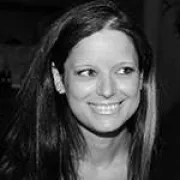Ever since its invention back in the 18th century, photography has been documenting life. At the same time, it focuses on inviting audiences to a rather subjective world while trying to be taken seriously as an art form. Photography has always been considered a male dominated profession, but luckily things are changing. Scholars, writers, bloggers, photography students and enthusiasts have been giving due to the female pioneers of the field. Most of them were always standing and/or hiding in the shadows, oblivious to how much they could acclaim and accomplish. Arguably, the technique, concepts and themes female photographers use, differ from those of male photographers. When most women were convinced that their place was in the kitchen and certainly not in the dark room, there were those who were struggling to surpass their male counterparts and work towards gaining respect and recognition for their work.
You think of the model as the exhibitionist and the photographer as the voyeur. In fact the voyeur has to decide his desire in a split second, using the shutter of the camera. You can hear his desire. Good photographers always reveal themselves somehow more than the model.
© Friedl Kubelka
Friedl Kubelka
(British-born Austrian photographer, 1946-) was born in London, but grew up in Vienna. Her father had gifted her a box camera when she was 12 years old and that’s when she started to take photographs. From 1965 until 1969, Kubelka started making films at the Graphic Instruction and Research Institute in Vienna. It wasn’t until the age of 25 that she received her photography degree and opened her own professional photography studio. Kubelka started photographing herself in expensive lingerie in 1972 and finally produced a series called
Pin-Up
. It was an attempt to depict and analyze the distant relationship between photographer and model. For the next 11 years, Friedl would photograph herself daily over one-year spans and then mount the photos together on large sheets of paper. The series was called
One Year Self-Portraits
and it was meant to document her different emotions and let the viewers see her both as a woman and an artist. In 1978, Friedl became a mother and started photographing her daughter from the first week of her life until her 18th year of age. The photographer ended up with 793 photographs on 18 different mount boards. In 1980, Kubelka began yet another series that consisted of pictures of her mother. Friedl is the owner of numerous photography awards and she has exhibited her work all over Europe and North America. In 1990, at the age of 44, she founded the Friedl Kubelka School for Artistic Photography in Vienna. It was devoted exclusively to local artistic photography. In 2006, at the age of 60, she founded the School Friedl Kubelka for Independent Film, which was dedicated to the art of analog filmmaking. The school has featured guests and teachers such as Eve Heller, Oona Mosna, Ken Jacobs and more. Kubelka’s images are honest, pure and speak of the depths of female consciousness. The Viennese photographer boldly created intimate, psychological portraits and elegantly combined her mundane domestic world with her creative universe.

Wilda Gerideau-Squires
(African-American photographer, 1946-) was born in New York and moved to Boston at 19 years old. She majored in Business Administration and worked in the travel industry for 30 years, before she finally became a photographer. She took a Studio Art Class at the Museum of Fine Arts for 2 years and became a professional photographer at 54. Gerideau-Squires uses both film and digital media and focuses mainly on female portraiture and creative abstract images. Her work has been featured in many magazines and has been exhibited in museums and galleries, in Europe and in the USA. The renowned photographer has also received both national and international awards, and was named among the world’s most Distinguished Women Photographers by Women in Photography back in 2008. Her photographs are included in the Peter E. Palmquist Collection at Yale University’s Beinecke Library, the Boston State House Office Building and in private collections in the United States and Canada. Today, she is a resident artist at Western Avenue Studios and Lofts and is represented by the ALL Art Gallery, in Lowell, MA. Wilda chooses seemingly boring, everyday objects like glass, fabric and metal and turns them into intellectual pieces of textures, forms and light. Her distinctive style of fine art photography is what makes her stand out amongst her female and male counterparts.
We will continue talking about female names that left their mark in photography and about contemporary female photographers who are still to emerge. There are a lot of female photographers out there deserving of praise and we can only hope to cover as many of them as we can. Please, follow this space to find out more.

My abstract compositions are developed around common elements such as fabric and glass, ultimately evolving into what – for me – are evocative images that continually remind me that, no matter how mundane or simple, if we take the time to look, there is in everything an extraordinary element waiting to be discovered and appreciated. I find viewers appreciate the abstract nature of my work, because it does encourage them to insinuate their own ‘voices’ into my images, thus allowing them to experience a more personal connection with them.








